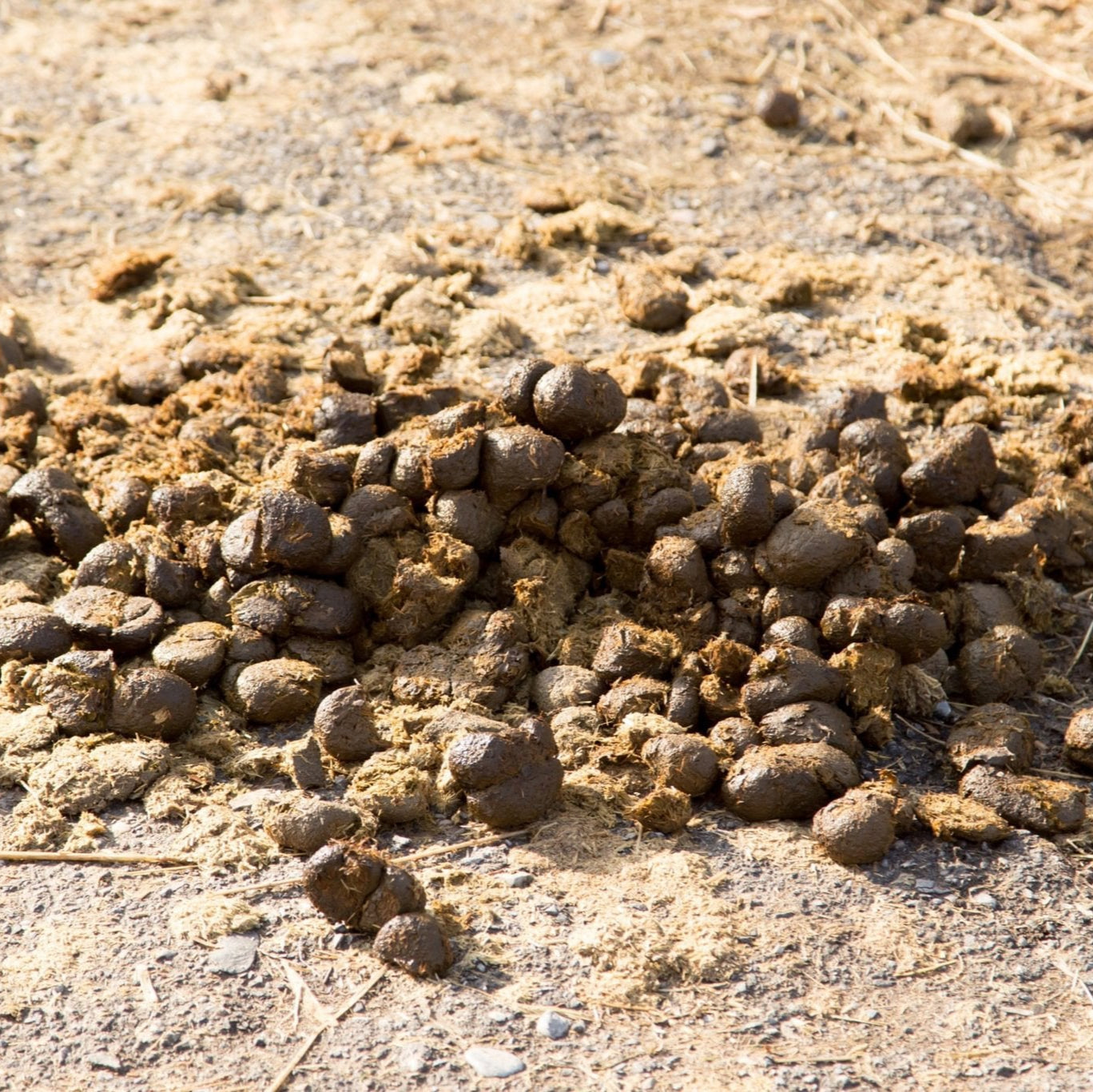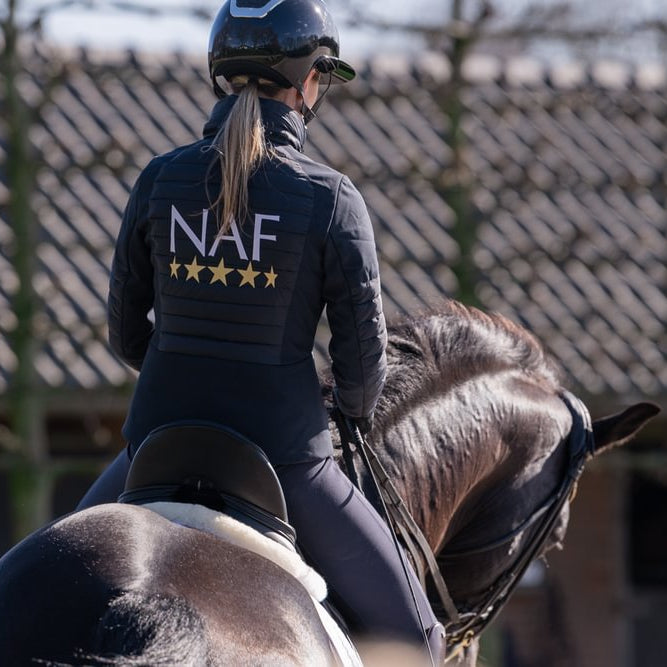What do your horse’s droppings tell you about their overall health?
While analysing your horse’s droppings might not be fun it can reveal important information. Your horse’s digestive tract is closely linked to general health, with over 70% of their total immunity coming from there. Assessing the nature of your horse’s droppings therefore gives a crucial insight not only to his or her current health status, but also the risk of developing future problems.
There are several ways that a horse’s droppings can be analysed:
Consistency
The consistency of the droppings can vary hugely and be an important indicator of gut health. The consistency can be graded into 7 different categories:
1. Watery diarrhoea
A horse passing profuse, liquid diarrhoea should be considered a medical urgency. Your veterinary surgeon will be able to assess the severity of the situation and advise treatment.
This is a different condition to Free Faecal Water Syndrome (FFWS) that is discussed below (point 7).

2. Diarrhoea
The causes of diarrhoea in horses are numerous and range in severity from severe to very mild. Any sign of your horse’s droppings turning to diarrhoea warrants discussion with your vet. Foals are particularly prone to diarrhoea as their gut learns to cope with the changes in diet and environment, consider short term use of pre and probiotics and binders as recommended by your vet.

3. Soft, unformed
This is the type of faecal consistency often termed ‘cow-pat like’. The droppings are not liquid but neither are they in formed balls of manure. This consistency is abnormal and is a clue that all is not well in your horse’s gut.
- Ensure sufficient fibre is being fed. Remember fresh grass can be relatively low in fibre, particularly during rapid growth and high rainfall. Offering dry hay in the pasture may help.
- Acid condition in the hind gut, this occurs when harmful bacteria out compete the friendly bacteria in the gut. Acidic conditions are produced, leading to a reduction in the digestion efficiency of the hindgut and the production of soft, unformed faeces. The causes of this include lush grass, excessive concentrate feeding and physical or environmental stress. The use of a supplement containing pre and probiotics, along with antacids and a binding agent, can be very useful in maintaining a normal consistency.

4. Soft, formed, glossy
This is the ideal consistency and indicates all is well inside the horse’s gut. Faecal balls are formed but soft, with a glossy appearance. This is usually the case with a healthy horse that has a combination of access to suitable pasture with an additional source of fibre in the diet such as hay.

5. Firm, formed
Where the diet is fibre based and essentially good, but there is minimal access to fresh grass, this consistency is considered normal and more common during winter.

6. Hard/dry
If droppings are hard and dry it could indicate dehydration, or poor quality forage. Increase water intake by soaking forage, if necessary, or feeding soaked feed and supplement with ElectroSalts to encourage drinking. Ensure the teeth are checked regularly by a vet or equine dentist, as poor dentition can also result in hard, fibrous droppings.

7. Free faecal water
FFW describes the passing of water from the rectum alongside droppings which, themselves, may be otherwise normal. Water may be passed before, during or after droppings, and while the cause is still not well understood it is rarely associated with ill health. However, it can cause skin irritation, increase grooming and attract flies. Feed a high fibre diet, and supplement with daily prebiotic, probiotics and bentonite clay, as a digestive absorbent.

Frequency
Horses pass approximately the same number of droppings each day. Knowing what is normal for your horse is important, as any changes – up or down – could be a sign of an internal problem. Mares and geldings typically pass around eight to twelve droppings per day, with stallions and foals passing more. Horses fed a higher proportion of dried forage will pass relatively more droppings than a horse on grass. Although horses are good at handling dried forage they cannot digest all they eat and so more droppings result.
Too few droppings can result from simply eating less, particularly less fibre. However, if droppings stop altogether, or there are signs of colic, then there is risk of an intestinal blockage and your vet should be contacted immediately. An increasing number of droppings may be due to diarrhoea, microbiome disturbance, stress or excitement.
Colour
The diet has the biggest effect on the colour of your horse’s droppings, but they should be on a scale from green to brown. Horses on fresh grass will have greener colour, with the darker brown colour for those on hay based diets. Some commercial diets may cause an orange tinge to be seen.
If a yellow colour is noticed it indicates mucous from the gut lining, and suggests the passage through the gut has slowed. Monitor the horse closely, increase water intake by soaking forage and feeding electrolytes. Discuss with your vet if it persists, or if the mucous is obvious.
If red is seen, indicating blood in the droppings, contact your veterinarian immediately.
Smell
A distinctly malodorous smell to the faeces can be associated with infection (often in combination with diarrhoea). It can also be a sign of excessive carbohydrate or protein intake, often caused by over feeding of concentrates. An acidic hindgut, where the friendly bacteria have been out competed by harmful bacteria can also cause an abnormal smell.
Conclusion
Taking note of your horse’s droppings can give you a lot of information about their overall health. It is important to develop an accurate picture of what is normal for your horse over a period of time. Knowing the typical frequency, colour, smell and consistency of their droppings can help you understand the health status of their gut and alert you to when changes occur. A gut that receives the appropriate nutrition needed to function normally is of vital importance to the overall health of your horse. Poor gut health can lead to many complications and so learning to look out for the signs early is vitally important.
Written by: Dr Andy Richardson, Veterinary Director - - BVSc CertAVP(ESM) MRCVS. & Kate Hore, Head Nutritionist. RNutr (Animal), R.Anim.Technol (Cert), BSc(Hons)
Find out more about Andy, Kate and our Technical Team HERE.



